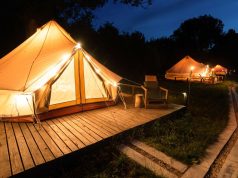Imagine this: You wake up without an alarm, the scent of fresh bread wafting in from a local bakery. Your plan for the day isn’t a frantic dash between five different landmarks, but a leisurely stroll to the neighborhood market. You don’t just see a new city; you live in it, if only for a week. This isn’t a far-fetched dream; it’s the heart of a growing movement that’s changing how we experience the world: slow travel.
In an age of hyper-connectivity and an obsession with ticking off bucket-list items, slow travel is a gentle rebellion. It’s the antidote to the whirlwind, 7-cities-in-10-days tour. It’s about swapping the checklist for connection, the itinerary for intuition, and the superficial for the substantial. It’s about understanding that the real magic of a place isn’t just in its monuments, but in its daily rhythms, its quiet corners, and its people.
This comprehensive guide is your invitation to step off the tourist treadmill. We’ll explore the philosophy, uncover the profound benefits, and provide a practical roadmap to help you plan your own deeply rewarding slow travel journey.
The Core Principles of the Slow Travel Movement

Slow travel is more of a mindset than a strict set of rules. It’s rooted in the “Slow Food” movement that began in Italy in the 1980s, which championed local culinary traditions against the rise of fast food. Similarly, slow travel champions a deeper, more sustainable engagement with destinations. Here are its guiding principles:
- Connection Over Checklists: The goal isn’t to see as much as possible, but to connect as deeply as possible. This means spending more time in fewer places, allowing you to build relationships with locals, understand the culture, and find your own favorite spots.
- Quality Over Quantity: One week spent truly exploring a single region is valued more than a continent-spanning tour. This focus on depth leads to richer memories and a more profound understanding of a place.
- Embrace Serendipity: While some planning is necessary, slow travel leaves ample room for spontaneity. It’s about being open to unplanned detours, conversations with strangers, and discovering hidden gems that no guidebook could ever list.
- Sustainable and Responsible: By its very nature, slow travel is more sustainable. It often involves using public transport, supporting local businesses (from family-run restaurants to independent artisans), and reducing the carbon footprint associated with constant, rapid transit.
- Live Like a Local: This is the cornerstone. Rent an apartment instead of a hotel room. Shop at the local market and cook your own meals. Find a favorite coffee shop and become a regular. Learn a few phrases in the local language. Participate in the daily life of your temporary home.
Why You Should Embrace Slow Travel: The Transformative Benefits
The appeal of slow travel goes far beyond just a more relaxed vacation. It offers a wealth of benefits that can genuinely change your perspective on travel and life itself.
Drastically Reduced Travel Burnout
We’ve all been there: returning from a “vacation” feeling more exhausted than when we left. The pressure to see and do everything creates stress. Slow travel eliminates this. By reducing travel time and logistical headaches, you give yourself the mental and physical space to actually rest, recharge, and enjoy your surroundings.
Deeper Cultural Immersion
You can’t truly understand a culture from the inside of a tour bus. Slow travel allows you to observe the nuances of daily life. You learn which days are market days, how people greet each other, the rhythm of the workday, and the importance of the afternoon siesta. This immersive experience is something a traditional vacation can rarely offer.
More Authentic and Meaningful Connections
When you’re not rushing, you have time to talk. You can have a real conversation with the owner of the guesthouse, the artist at the market, or the person sitting next to you at a cafe. These unhurried interactions often become the most cherished memories of a trip.
It’s Often More Budget-Friendly
While it might seem counterintuitive, staying in one place longer can significantly reduce costs. You can often get weekly or monthly discounts on accommodations like apartments. Cooking some of your own meals saves a fortune compared to eating out three times a day. You’ll also spend less on expensive transportation like flights, high-speed trains, and taxis.
A Positive Impact on Local Communities
Slow travelers tend to spend their money more locally. You’re not just paying international hotel chains and tour operators. Your money goes directly to local landlords, grocers, artisans, and small business owners, contributing more meaningfully to the local economy.
How to Plan Your First Slow Travel Adventure: A Practical Guide

Ready to take the plunge? Planning a slow travel trip involves a slight shift in approach. Here’s how to get started.
1. Shifting Your Mindset: The First and Most Important Step
Before you book anything, you need to adjust your expectations. Let go of the Fear Of Missing Out (FOMO). Accept that you won’t see everything, and that’s the point. The goal is depth, not breadth. Give yourself permission to do “nothing” — to spend an entire afternoon reading in a park or simply people-watching from a balcony.
2. Choosing the Right Destination
Almost any destination can be experienced slowly, but some are more conducive to it than others. Look for places with:
- A Strong “Home Base” Potential: Pick a city or large town that is interesting in its own right but also offers excellent public transport links for easy day trips to surrounding villages, hiking trails, or beaches.
- A Slower Pace of Life: While you can slow travel in a megacity like Tokyo, a smaller city like Florence, a region like Provence in France, or a coastal area in Portugal might feel more naturally aligned with a relaxed pace.
- Affordability for Longer Stays: Destinations in Southeast Asia, Eastern Europe, or Latin America can be more affordable for extended trips, allowing your budget to stretch further.
3. Rethinking Your Itinerary (or Ditching It)
Instead of a day-by-day schedule, create a loose list of possibilities. Maybe your “plan” for the week is simply: visit the main market, take a cooking class, find a good hiking trail, and read a book. Let each day unfold naturally. Wake up and ask yourself, “What do I feel like doing today?”
4. Accommodation for the Slow Traveler
This is a key element. Instead of hotels, consider:
- Apartment Rentals (Airbnb, Vrbo, etc.): Having a kitchen and a living space is a game-changer. It allows you to feel more at home, save money on food, and experience a more residential neighborhood.
- House-sitting or Home Exchanges: For longer trips, platforms like TrustedHousesitters can provide free accommodation in exchange for looking after a home and pets.
- Local Guesthouses or Farm Stays (Agriturismos): These offer a more intimate experience and a direct connection with your hosts, who can provide invaluable local insights.
5. Packing Light and Smart
Since you won’t be moving every two days, you don’t need to live out of a perfectly packed suitcase. However, packing light is still liberating. Choose versatile clothing that can be layered and washed easily, especially if your apartment has a washing machine. This frees you from the burden of heavy luggage.
6. Budgeting for a Slower Pace
Your budget will look different. You’ll spend less on inter-city transport and tourist attraction tickets, and more on groceries, local transit passes, and perhaps a longer-term rental. Track your spending for the first few days to get a feel for the local cost of living, then adjust accordingly. The beauty of slow travel is that a simple, inexpensive day can be the most enjoyable.
Challenges of Slow Travel and How to Overcome Them
Even this idyllic style of travel isn’t without its hurdles. Being prepared for them can make all the difference.
- The Itch to Move: In the first few days, you might feel restless, programmed by past experiences to see more, do more. Acknowledge the feeling and resist it. Push through this initial phase, and you’ll settle into a comfortable new rhythm.
- Loneliness: If you’re traveling solo, staying in one place can sometimes feel isolating, especially without the built-in social structure of a hostel. Mitigate this by joining local workshops, taking a language class, frequenting the same cafe to become a familiar face, or using apps to connect with other travelers or locals.
- Analysis Paralysis: With no set itinerary, the sheer freedom of choice can sometimes be overwhelming. If you feel stuck, give yourself a simple mission for the day: find the best gelato, locate a specific bookstore, or walk along the river from one bridge to the next.
Conclusion: Your Journey Starts with a Single, Unhurried Step
Slow travel is more than a vacation style; it’s a philosophy that teaches us to be more present, observant, and engaged with the world around us. It reminds us that the journey’s true value isn’t measured in miles covered or sights seen, but in moments of genuine connection and quiet understanding.
So for your next trip, dare to subtract. Choose one place. Unpack your bag. Learn how to say “good morning” in the local tongue and mean it. Find a bench with a nice view and just sit. You might discover that by slowing down, you experience more of the world than you ever thought possible.









